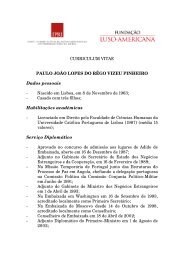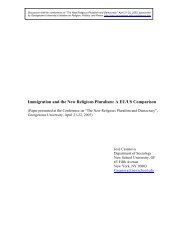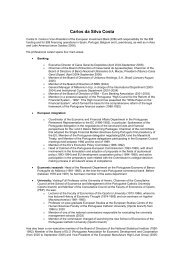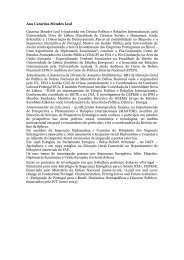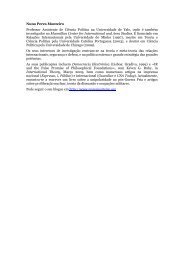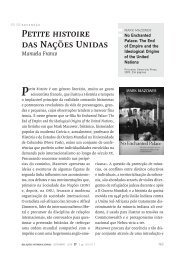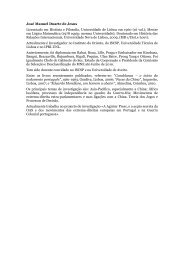ruling elites and decision-making in fascist-era dictatorships
ruling elites and decision-making in fascist-era dictatorships
ruling elites and decision-making in fascist-era dictatorships
You also want an ePaper? Increase the reach of your titles
YUMPU automatically turns print PDFs into web optimized ePapers that Google loves.
xviRul<strong>in</strong>g ElitesThis book explores an underdeveloped area <strong>in</strong> the study of fascism<strong>and</strong> right-w<strong>in</strong>g <strong>dictatorships</strong>: the structure of power. The old <strong>and</strong> richtradition of elite studies can tell us much about the structure <strong>and</strong>op<strong>era</strong>tion of political power <strong>in</strong> the <strong>dictatorships</strong> that were associatedwith fascism, whether through the characterisation of the socio- professionalstructure or by the modes of political elite recruitment thatexpress the extent of its rupture <strong>and</strong>/or cont<strong>in</strong>uity with the lib<strong>era</strong>lregime, the type of leadership, <strong>and</strong> the relative power of the political<strong>in</strong>stitutions <strong>in</strong> the new dictatorial system (Lewis 2002; Almeida, P<strong>in</strong>to<strong>and</strong> Bermeo 2003). Analys<strong>in</strong>g four regimes associated with fascism(Nazi Germany, Fascist Italy, Franco’s Spa<strong>in</strong> <strong>and</strong> Salazar’s Portugal)from this perspective, the book <strong>in</strong>vestigate the dictator-cab<strong>in</strong>et-s<strong>in</strong>gleparty triad from a comparative perspective.Locat<strong>in</strong>g power <strong>in</strong> <strong>fascist</strong>-<strong>era</strong> <strong>dictatorships</strong>:political <strong>in</strong>stitutions <strong>and</strong> <strong>elites</strong>Italian Fascism <strong>and</strong> German National Socialism provided powerful<strong>in</strong>stitutional <strong>and</strong> political <strong>in</strong>spiration for other regimes, their types ofleadership, <strong>in</strong>stitutions <strong>and</strong> op<strong>era</strong>t<strong>in</strong>g methods already encapsulatedthe dom<strong>in</strong>ant models of the 20th-century dictatorship: personalisedleadership, the s<strong>in</strong>gle or dom<strong>in</strong>ant party <strong>and</strong> the ‘technico-consultative’political <strong>in</strong>stitutions.The <strong>dictatorships</strong> associated with fascism dur<strong>in</strong>g the first half ofthe 20th century were personalised <strong>dictatorships</strong> (Payne 1996). It is<strong>in</strong>terest<strong>in</strong>g to see that even those regimes that were <strong>in</strong>stitutionalisedfollow<strong>in</strong>g military coups <strong>and</strong> even military <strong>dictatorships</strong> gave birthto personalist regimes <strong>and</strong> more or less successful attempts to creates<strong>in</strong>gle or dom<strong>in</strong>ant parties. The personalisation of leadership <strong>in</strong> the regimeswas transformed <strong>in</strong>to a dom<strong>in</strong>ant trait. More than half of the 172<strong>dictatorships</strong> of the 20th century that had been ‘<strong>in</strong>itiated by militaries,parties, or a comb<strong>in</strong>ation of the two, had been partly or fully personalisedwith<strong>in</strong> three years of the <strong>in</strong>itial seizure of power’ (Geddes 2006:164). However, autocrats need <strong>in</strong>stitutions <strong>and</strong> <strong>elites</strong> to rule <strong>and</strong> theirrole with<strong>in</strong> the regimes is often underestimated, tak<strong>in</strong>g the centralisationof <strong>decision</strong>-<strong>mak<strong>in</strong>g</strong> with<strong>in</strong> the <strong>dictatorships</strong> as a given.




